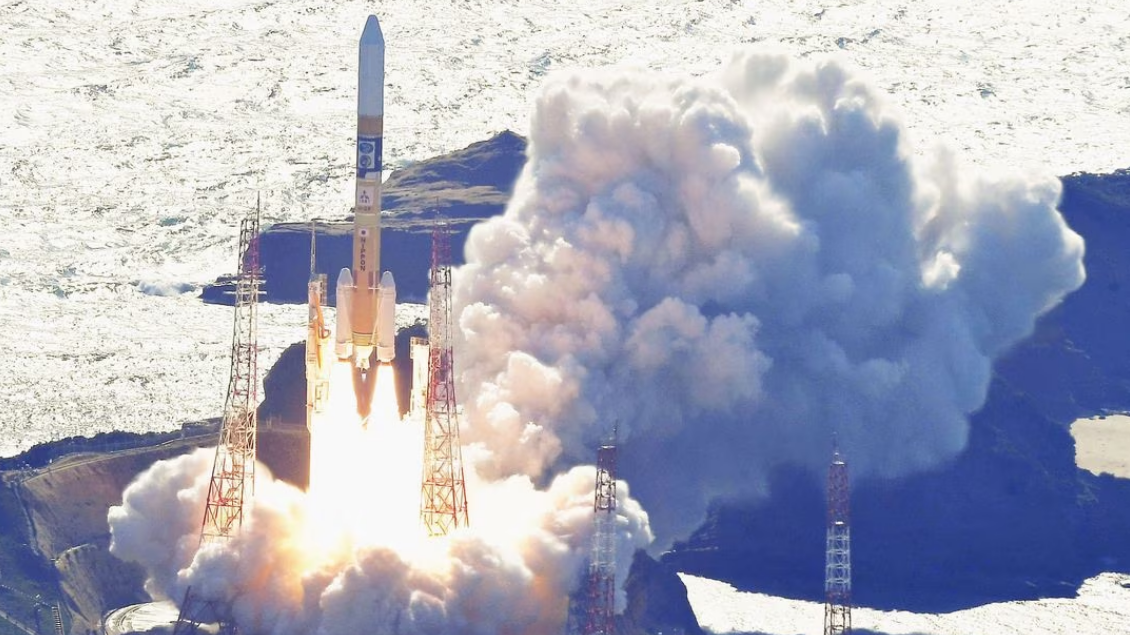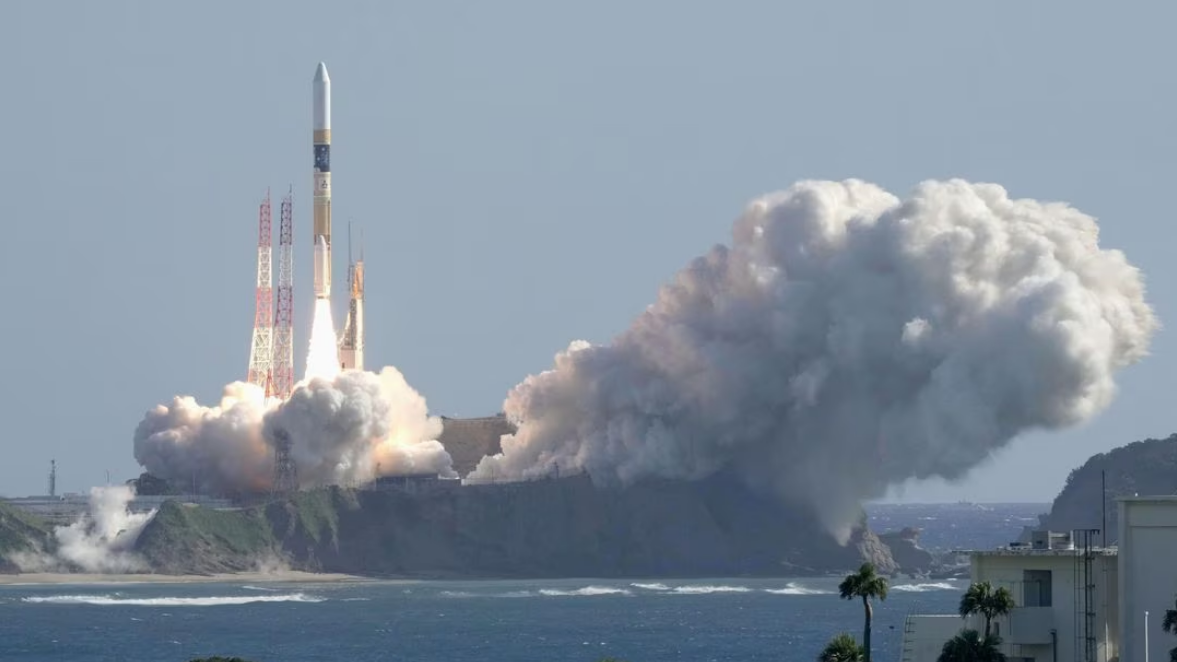
H-IIA rocket carrying the national space agency's moon lander is launched at Tanegashima Space Center on the southwestern island of Tanegashima, Japan, September 7, 2023. /Reuters
H-IIA rocket carrying the national space agency's moon lander is launched at Tanegashima Space Center on the southwestern island of Tanegashima, Japan, September 7, 2023. /Reuters
An H-IIA rocket carrying the Japanese space agency's lunar lander lifted off from Tanegashima Space Center on Thursday.
It will attempt to make the nation's first lunar landing, after three postponements in a week last month due to bad weather.
The Japan Aerospace Exploration Agency (JAXA) said the rocket lifted off from the Tanegashima Space Center in the southwestern prefecture of Kagoshima at 8:42 a.m. local time.
On board the rocket is JAXA's Smart Lander for exploring the Moon, or SLIM, whose tasks include demonstrating accurate landing techniques and examining moon rocks. Dubbed the "moon sniper", Japan aims to land SLIM within 100 meters of its target site on the lunar surface. The $100-million mission is expected to reach the moon by February.

H-IIA rocket carrying the national space agency's moon lander is launched at Tanegashima Space Center on the southwestern island of Tanegashima, Japan, September 7, 2023. /Reuters
H-IIA rocket carrying the national space agency's moon lander is launched at Tanegashima Space Center on the southwestern island of Tanegashima, Japan, September 7, 2023. /Reuters
The launch comes two weeks after India became the fourth nation to successfully land a spacecraft on the moon with its Chandrayaan-3 mission to the unexplored lunar south pole.
Two earlier lunar landing attempts by Japan failed in the last year. JAXA lost contact with the OMOTENASHI lander and scrubbed an attempted landing in November. The Hakuto-R Mission 1 lander, made by Japanese startup ispace, crashed in April as it attempted to descend to the lunar surface.
The domestically made rocket also carries the X-Ray Imaging and Spectroscopy Mission satellite, or XRISM, a joint project of JAXA, NASA and the European Space Agency, to observe plasma in stars and galaxies.
This is the first launch of a Japanese large rocket since the debut launch of the next-generation medium-lift H3 rocket failed in March.
The SLIM's lunar landing is scheduled for early next year. If the mission is successful, Japan will become the fifth country to land a probe on the moon, after the U.S., China, the Soviet Union and India.
The country plans to send astronauts to the moon toward the end of this decade.
(With input from agencies)